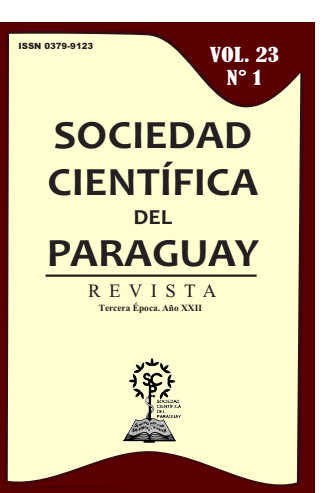Routing multi-objective of vehicles in two levels for intelligent urban logistics
DOI:
https://doi.org/10.32480/rscp.2018-23-1.123-138Keywords:
Vehicle Routing Problem, Multi-level logistic, Urban Goods Movement, Multi-Objective Optimization, Multi-Objective Evolutionary AlgorithmAbstract
Urbanization and growing economies current trends lead to fast growth in traffic congestion; consequently, municipal governments need to consider new strategies to face such challenges. Multi-level distribution is already known by commercial companies as a strategy to face this problem. In this context, the classic formulation of the Two-Tier Vehicle Routing Problem (2E-VRP) reflects the perspective of a single provider, without considering third-party routing decisions. The lack of coordination among providers executing their individual plans and, consequently, the lack of a holistic approach to urban traffic can generate even more problems. Therefore, this article presents a multi-objective formulation of the multi-supplier 2E-VRP with heterogeneous vehicle fleets from the perspective of the municipal government in the context of Urban Goods Movement. Additionally, a Multi-Objective Evolutionary Algorithm is presented for the resolution of the proposed problem with experimental validations of the quality of the obtained solutions.
Metrics
Downloads
References
2. Laporte G. The Vehicle Routing Problem: An Overview of Exact and Approximate Algorithms. European Journal of Operational Research. 1992;59(3):345-358.
3. Crainic TG, Ricciardi N, Storchi G. Advanced Freight Transportation Systems for Congested Urban Areas: Transportation Research Part C. Emerging Technologies. 2004;12(2):119-137.
4. González-Feliu J. Models and Methods for the City Logistics: the Two-Echelon Capacitated Vehicle Routing Problem. Disertación Ph.D., Politecnico di Torino; 2008.
5. González-Feliu J. Vehicle Routing in Multi-echelon Distribution Systems with Cross-docking: A Systematic Lexical-metanarrative Analysis. Computer and Information Science. 2013;6(3):28-37.
6. Cuda R, Guastaroba G, Speranza MG. A Survey on Two-Echelon Routing Problems. Computers & Operations Research. 2015;55:185-199.
7. Hemmelmayr VC, Cordeau JF, Crainic TG. An Adaptive Large Neighborhood Search Heuristic for Two-Echelon Vehicle Routing Problems Arising in City Logistics. Computers & Operations Research. 2012;39(12):3215-3228.
8. Hernández-Pérez H, Salazar-González JJ. The Multi-commodity Pickup-and-Delivery Traveling Salesman Problem. Networks. 2014;63(1):46-59.
9. Coello Coello CA, Lamoun GB, Van Veldhuizen DA. Evolutionary Algorithms for Solving Multi-Objective Problems; 2007.
10. Crainic TG, Mancini S, Perboli G, Tadei R. Clustering-based Heuristics for the Two- Echelon Vehicle Routing Problem. Montreal, Canada: Interuniversity Research Centre on Enterprise Networks, Logistics and Transportation; 2008.
11. Crainic TG, Mancini S, Perboli G, Tadei R. Multi-start Heuristics for the Two-Echelon Vehicle Routing Problem. En European Conference on Evolutionary Computation in Combinatorial Optimization. Springer; 2011. p. 179-190.
12. Crainic TG, Mancini S, Perboli G, Tadei R. GRASP with Path Relinking for the Two- Echelon Vehicle Routing Problem. En Advances in Metaheuristics. Springer; 2013, p. 113-125. 13.
13. Crainic TG, Ricciardi N, Storchi G. Models for Evaluating and Planning City Logistics Systems. Transportation Science. 2009;43(4):432-454.
14. Perboli G, Tadei R. New Families of Valid Inequalities for the Two-Echelon Vehicle Routing Problem. Electronic Notes in Discrete Mathematics. 2010;36:639-646.
15. Perboli G, Tadei R, Vigo D. The Two-Echelon Capacitated Vehicle Routing Problem: Models and Math-based Heuristics. Transportation Science. 2011;46(3):364-380.
16. Jepsen M, Spoorendonk S, Ropke S. A Branch-and-Cut Algorithm for the Symmetric Two-Echelon Capacitated Vehicle Routing Problem. Transportation Science.2013;47(1):23-37.
17. Baldacci R, Mingozzi A, Roberti R, Calvo RW. An Exact Algorithm for the Two- Echelon Capacitated Vehicle Routing Problem. Operations Research. 2013;61(2):298- 314.
18. González-Feliu J, Perboli G, Tadei R, Vigo D. The Two-Echelon Capacitated Vehicle Routing Problem; 2008.
19. Russo F, Comi A. City Characteristics and Urban Goods Movements: A Way to Environmental Transportation System in a Sustainable City. Procedia-Social and Behavioral Sciences. 2012;39: 61-73.
20. Silva AB, Ribeiro A. An Integrated Planning for Cities to Promote Sustainable Mobility. En Proceedings of European Transport Conference. Citeseer, 2009.
21. Van Vliet O, Brouwer AS, Kuramochi T, van Den Broek M, Faaij A. Energy Use, Cost, and CO 2 Emissions of Electric Cars. Journal of Power Sources. 2011;196(4):2298-2310.
22. Barán B, Scharer M. A Multiobjective Ant Colony System for Vehicle Routing Problem with Time Windows. En Applied Informatics. 2003; p. 97-102.
23. Andrade CE, Miyazawa FK, Resende MG. Evolutionary Algorithm for the K- interconnected Multi-depot Multi-traveling Salesmen Problem. En Proceedings of the 15th Annual Conference on Genetic and Evolutionary Computation; 2013. p. 463-470.
24. Gee SG, Arokiasami WA, Jiang J, Tan KC. Decomposition-based multi-objective evolutionary algorithm for vehicle routing problema with stochastic demands. Soft Computing. 2016;20(9):3443-3453.
25. Deb K, Pratap A, AgarwalS, Meyarivan TAMT. A fast and elitist multiobjective genetic algorithm: NSGA-II. IEEE transactions on evolutionary computation.2002;6(2):182-197.
26. Han S, Tabata Y. A Hybrid Genetic Algorithm for the Vehicle-Routing Problem with Controlling Lethal Gene. Asia Pacific Management Review. 2002;7(3):405-425.
27. Zitzler E, Thiele L. Multi-Objective Evolutionary Algorithms: A Comparative Case Study and the Strength Pareto Approach. IEEE Transactions on Evolutionary Computation.1999;257-271.
Downloads
Published
Issue
Section
License
El/los autores autorizan a la Revista de la Sociedad Científica del Paraguay a publicar y difundir el articulo del cual son autores, por los medios que considere apropiado.


















